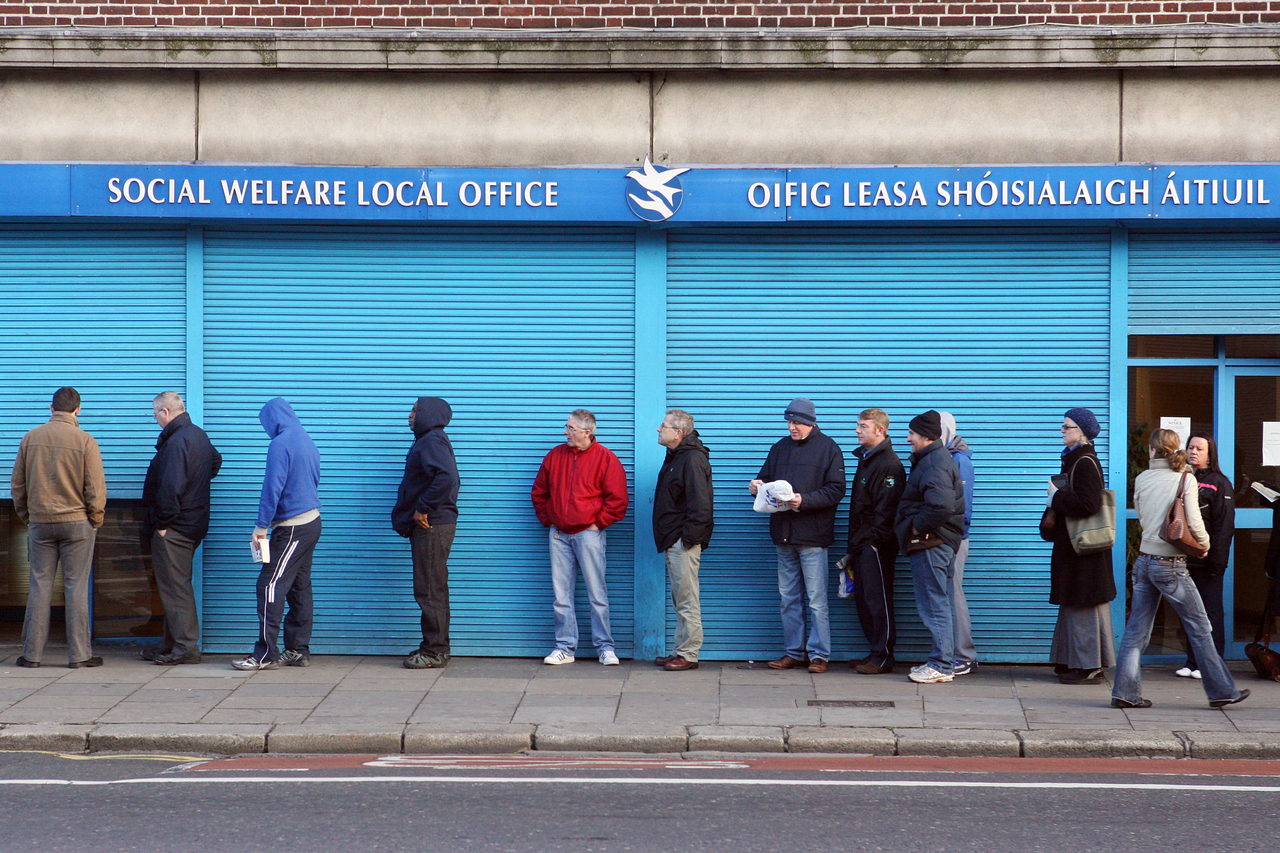
ESRI warns against austerity measures in short-term as economy heals from the pandemic
The think-tank has sketched the likely impact of the virus across a range of Irish economic indicators.
by Ian CurranAUSTERITY MEASURES COULD worsen the economic downturn caused by the Covid-19 pandemic if undertaken too soon, according to Kieran McQuinn, a research professor at the Economic and Social Research Institute (ESRI).
In its Quarterly Economic Commentary, released this morning, the ESRI sketches the likely impact of the virus across a range of Irish economic indicators, through three scenarios.
In its ‘baseline’ scenario, the most realistic of the three, ESRI researchers assumed that there will be some recovery towards the end of the year but that ongoing public health restrictions, such as social distancing, will remain in place, blocking an immediate return to pre-Covid levels of activity.
Gross Domestic Product (GDP), the total monetary value of all goods and services produced in the country, is projected to fall by 12% in this scenario with unemployment levels reaching 17% of the total labour force for the year, up from 5% last year. Unemployment figures should reach their peak of 24% in the current quarter, according to the report.
Government spending is projected to increase by 11% in the ESRI’s baseline scenario and to cover the cost of unemployment supports and public health measures, borrowing will have to be ramped up. This could result in a government deficit of €28 billion, around 9% of GDP, a “significant deterioration”, according to the report.
Speaking to the media ahead of the launch of the report, McQuinn warned policymakers that stabilising the economy through a “broad-based fiscal stimulus” programme should be their first priority.
This might, however, necessitate a “fiscal adjustment” — ie austerity measures — down the line, he said.
I think the incoming government needs to be aware that at some stage there will be a need for some fiscal adjustment down the road but I think the key point is that if you manage the stabilisation phase well over the short to medium term that will ultimately minimise the scale of adjustment that’s required in the longer term.
“If on the other hand, you start to enforce the fiscal adjustments too soon that will compound the shock and compound the downturn in the overall economic activity which, ironically, will mean you need a larger adjustment over the longer term. So I think that’s the key balancing act that has got to be achieved,” McQuinn said.
A more severe situation outlined by the ESRI, in which Ireland is hit with a second wave of infections that force strict lockdown measures to be reimposed, could result in GDP falling by 17% and unemployment hitting 19, according to the report.
A third, ‘benign’ scenario considered by the think-tank assumes that the government’s reopening of the economy continues as planned and that the virus will be suppressed to such an extent that pre-pandemic activity returns by the end of the year. Under these circumstances, the researchers believe that GDP will fall by just 9% for the year with unemployment levels hitting 15%.
Detailed breakdown
By comparing figures from the final quarter of last year with a detailed breakdown of the numbers of people claiming the government’s Pandemic Unemployment Payment (PUP), the ESRI was able to provide some insight into the demographics and geography of the “unprecedented” decline in employment levels.
According to the report, “claims for the payment amongst younger workers represent a far greater share of employment than for other age categories.”
Nearly 27,000 18-19-year-olds are claiming the PUP, close to 60% of the total number of workers in that age bracket who had a job last year. Over 93,000, or around 47%, of those formerly-employed workers aged between 19 and 22 are in the same situation.
The border region has been the worst-hit with nearly 30% of the labour force claiming the payment, followed by South-East with 28% and the Mid-West with almost 27%.
Consumer boom
One novel impact of the shutdown measures, according to the research conducted for the report by Professor John Fitzgerald, is that Irish households “have money that they could not spend” and have effectively “rationed”, which could result in a consumer boom down the line.
While households could spend their income on the unrestricted goods and services, they are clearly not doing so, but saving instead. The last time consumers in Ireland found themselves in this position was during the Second World War.
“If household behaviour today were similar to that of the 1940s, the ‘forced’ saving by households could result in a consumer boom if and when the crisis is perceived as being fully over, possibly in 2022.”
Meanwhile, the Banking and Payments Federation of Ireland (BPFI) has just released a new guide on payment breaks as new figures show that 140,000 breaks have been issued, nearly 80,000 of them for mortgages.
#Open journalism No news is bad news Support The Journal
Your contributions will help us continue to deliver the stories that are important to you
Support us now
Brian Hayes, chief executive of BPFI said: “With the initial three-month payment breaks issued in mid-March lenders are now undertaking a significant process of engagement with those who have availed of a break and those customers are now being contacted about their options once the current payment break ends.
“These include the availability of a payment break extension of up to an additional three-month period for those that continue to be directly impacted by the fallout from the COVID-19 pandemic.”